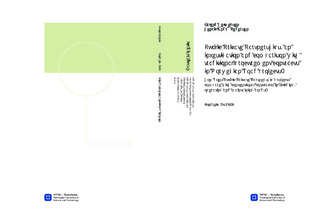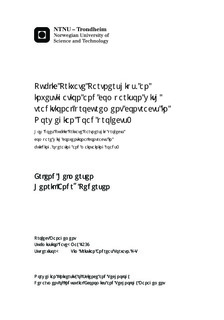| dc.description.abstract | A new government gives room for new ideas and the implementation of these. In the case of public private partnerships, it is more that the government is brushing of the dust from something the same governing party (The Conservative party, Høyre) started the last time they had governing power in Norway. In 1998, they started three trial PPP projects in road infrastructure. This is some years ago, and with the rejuvenated focus on PPP, it would be wise to see how the three first projects faired compared to the more traditional way of organising the construction of roads in Norway. A key characteristic of public-private partnerships is that the two tasks of building a facility and subsequently operating it are bundled and delegated to a single private contractor, while under traditional procurement, separate contractors are in charge of these two tasks. This thesis seeks to find what contracts and financing possibilities there are, as well have a look at what the different types offer. The aim is to find out whether it is possible to use the market even better in order to find a solution to build roads with a span longer than the finalisation of the road. By that, the meaning is taking the operation of the road into account. In order to answer these challenges, the aim of this thesis seek to: (1) Create an overview over contract details in the three existing Norwegian PPP projects and compare it to the traditional contract formulation regarding both construction and later operation of the road. The aim is to find a way to describe the governance and payment scheme for PPP compared to traditional contracts.(2) Consider factors that influences the LCC in the PPP contract E39 Klett-Bårdshaug, and evaluate findings with traditional construction and operation contracts.(3) If possible, find a conceptual estimate for the LCC at E39 Klett-Bårdshaug, compared to LCC for similar road elements (road in the day, bridge, and tunnel) from traditional road construction contracts regarding both construction and operation. When looking at what elements in the PPP project E39 Klett-Bårdshaug that effect the LCC, several factors that can be hard to transfer to traditional contract forms is identified, including total enterprises such as the road development contract. The payment model and scheme is something you only get with a PPP project. The findings shows that it is reasonable to attribute many of the positive sides of PPP to the payment scheme, but also most of the negative sides. The road development contract tries to implement some of the positive sides, and the results of the test project in E6 Helgeland will show the output.There are clear differences between the PPP contract used in Norway, and the examples being used as a deterrent against using it. The finance and payment profile in the Norwegian contract will not be affected in the same way by the financial crisis as in other countries. In other countries, the reduced traffic amount due to the crisis lead to the need for governmental support in order to keep the projects going. Some of these projects have changed to a payment scheme more similar to the Norwegian one, where the toll income goes to the Government, which in turn pays out the money from the toll stations and ads over the budget if the tolls does not cover the needed payment sum.Getting relevant figures from the PPP projects turned out to be hard, the same when it came to similar traditional construction and maintenance projects. A report containing general maintenance and construction figures was acquired, which made it possible to do an estimate of what the maintenance costs of the PPP project would be if it were a traditional maintenance contract. The conceptual estimate show maintenance costs for the road according to NPRA standards. Through analysis of the traffic, an alternative way of measuring the traffic is also presented. | nb_NO |

